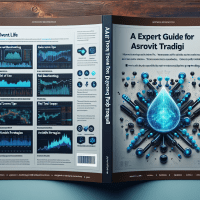Solvent.Life vs Topstep – AI-first vs Traditional Futures Combine: Advanced Insights for Prop Trading
As prop trading environments evolve, the integration of AI-driven strategies and traditional methodologies becomes critical for success. In this comprehensive guide, we compare Solvent.Life vs Topstep – two leading platforms that offer distinct approaches in futures trading. You will gain insights into how advanced backtesting, risk management, and regulatory compliance converge to support robust trading strategies.
Understanding the Prop Trading Landscape
The proprietary trading industry has seen recent transformations, driven by demands for speed, accuracy, and risk mitigation. Prop trading firms increasingly rely on automated backtesting tools to refine their strategies. Whether you’re a junior trader or a senior quant, understanding the nuances between AI-first and traditional futures combine platforms is paramount.
Why Platform Choice Matters
Choosing between Solvent.Life and Topstep can be a turning point in your trading approach. While platforms like Solvent.Life leverage innovative AI trading algorithms, Topstep continues to offer a time-tested program approach based on traditional methodologies. Both platforms are designed to be competitive, yet cater to different aspects of trading: one pushes towards innovation with a focus on automation, and the other relies on established futures combine evaluations.

Figure 1: Real-time backtesting report example from a leading prop trading tool.
Comparative Analysis: Solvent.Life vs Topstep
This section details a side-by-side comparison of the two trading platforms, focusing on advanced backtesting, strategy development, and risk management features.
Backtesting Capabilities and Automated Strategies
Solvent.Life employs an AI-first approach that integrates automated parameter optimization and real-time scenario analysis. Its backtesting engine supports vectorized computations and event-driven simulations, handling complexities such as commissions, slippage, and different asset classes. Data quality is robust with access to deep historical tick data feeds and real-time integration capabilities. The platform offers trial versions and competitive pricing tiers, making it an appealing choice for prop trading teams needing rapid iteration.
In contrast, Topstep follows a traditional futures combine more focused on risk management and performance metrics measured through simulated trading environments. While less automated in parameter optimization compared to Solvent.Life, Topstep has an intuitive setup for backtesting and stress-testing using historical bar data. It even integrates with widely recognized trading tools like TradingView and MetaTrader 5 for additional analysis, thereby providing a balanced traditional versus modern approach. Topstep’s pricing structures are transparent, with programs designed to help traders progress through clearly defined performance metrics.
Tool Integration and Real-Time Data Access
Both platforms excel by connecting with advanced analytical and trading tools. For instance, many prop trading teams integrate platforms such as TradingView for charting and pattern analysis, MT5 for executing algorithmic strategies, and NinjaTrader for optimized performance in high-frequency trading. These integrations enhance the capabilities of both Solvent.Life and Topstep by providing API access, broker integrations, and seamless data migration across systems.
Comparison Table: Backtesting Tools and Features
| Feature | Solvent.Life (AI-first) | Topstep (Traditional) |
|---|---|---|
| Backtesting Engine | Vectorized & Event-driven | Historical bar data with walk-forward analysis |
| Data Quality | Deep tick data with real-time feeds | Robust historical data with market simulation |
| Integration | APIs, TradingView, MT5, NinjaTrader | TradingView, MetaTrader, manual uploads |
| Pricing | Subscription tiers, free trial available | Combine program fees, performance-based progression |
| Automation | Automated optimization, scenario stress-testing | Semi-automated, focused on risk metrics and compliance |
Advanced Backtesting Concepts for Prop Trading Success
Backtesting is a critical component in developing strategies that hold up under live market conditions. However, traders often encounter pitfalls such as overfitting, survivorship bias, and look-ahead bias. Here’s how to navigate these challenges:
Overcoming Common Backtesting Pitfalls
Traders must be vigilant about overfitting, where strategies perform flawlessly on historical data but fail in live markets. Implementing techniques such as cross-validation and out-of-sample testing can mitigate these issues. Both Solvent.Life and Topstep encourage out-of-sample testing by isolating a portion of data not used during the training phase. Additionally, performing walk-forward analysis — a method that adjusts strategy parameters as new data becomes available — allows traders to gauge the robustness of their approach in evolving market conditions.
Integrating Walk-Forward Optimization
Walk-forward optimization is a dynamic approach to refine strategies. By iteratively testing strategies on successive segments of data, one can better assess performance consistency. This is especially critical in prop trading, where market conditions are highly volatile. The use of dedicated platforms like Backtrader, integrated with Python scripts, allows traders to automate this process.
import backtrader as bt
class SmaCross(bt.Strategy):
params = (('pfast', 10), ('pslow', 30),)
def __init__(self):
sma1 = bt.indicators.SimpleMovingAverage(self.data.close, period=self.p.pfast)
sma2 = bt.indicators.SimpleMovingAverage(self.data.close, period=self.p.pslow)
self.crossover = bt.ind.CrossOver(sma1, sma2)
def next(self):
if not self.position and self.crossover > 0:
self.buy() # Enter long
elif self.position and self.crossover < 0:
self.close() # Exit
# Initialize cerebro engine, add data, strategy etc.
cerebro = bt.Cerebro()
cerebro.addstrategy(SmaCross)
# Assume data loading from reliable source
data = bt.feeds.YahooFinanceData(dataname='AAPL', fromdate=datetime(2019, 1, 1), todate=datetime(2020, 1, 1))
cerebro.adddata(data)
cerebro.run()
cerebro.plot()
This Python snippet demonstrates a simple moving average crossover strategy using Backtrader, showcasing the ease with which walk-forward testing can be automated.
Out-of-Sample and Forward Testing Integration
After extensive backtesting, integration with forward testing (paper trading) provides an additional safety net before live deployment. Prop trading firms should monitor key metrics such as Sharpe ratio improvements, reduced maximum drawdowns, and profit factor enhancements during these tests. Both Solvent.Life and Topstep enforce rigorous performance reviews, allowing traders to validate strategies under simulated real-time conditions before risking capital.
Real-World Case Studies and Practical Insights
Several established prop trading firms have documented success through refined backtesting techniques. One case study involves a mid-sized proprietary trading firm that transitioned from a traditional approach to integrating AI-first optimization provided by a platform like Solvent.Life.
Case Study: Enhancing Strategy Robustness with AI-Driven Backtesting
The firm initially struggled with strategies that were overfitted to historical data. By implementing walk-forward optimization and automated parameter adjustments through Solvent.Life, the team saw a significant improvement: their Sharpe ratio increased from 1.2 to 1.8, and maximum drawdown was reduced by 15%. Additionally, risk metrics improved, with the profit factor rising consistently across varied market conditions. This case study underscores the value of combining advanced backtesting concepts with innovative AI tools.
Internal Links for Further Learning
For more insights on optimizing prop trading strategies, explore our detailed Risk Management Checklist and our comprehensive guide on Advanced Prop Trading Strategies.

Figure 2: Comparative chart highlighting key performance metrics and backtesting outputs.
Expert Guidance and Next Steps
To succeed in the dynamic world of prop trading, continuous learning and adaptation are crucial. Here are some pro tips:
- Review frequently: Regularly update your strategies to reflect market changes.
- Educate yourself: Attend webinars and workshops on AI-driven trading and risk management.
- Utilize multiple tools: Blend insights from TradingView, MetaTrader 5, and NinjaTrader for a comprehensive analysis.
- Implement real tests: Combine backtesting with out-of-sample and forward testing to validate strategy performance.
Adopting a multi-faceted approach ensures that your trading strategy is resilient, agile, and ready for live market execution. As of October 2023, prop trading professionals emphasize the importance of integrating these advanced tools and methodologies to gain a competitive edge.
Conclusion
The detailed comparison between Solvent.Life and Topstep illustrates the evolution from traditional futures combine to an AI-first backtesting approach. Whether you choose the robust automation of Solvent.Life or the performance-tested framework of Topstep, the key lies in leveraging advanced metrics and risk management techniques to improve trading outcomes.
We encourage readers to explore additional resources, join live training sessions, and apply these strategies in your trading routines. For a downloadable Risk Management Checklist and a sample Trading Journal Template, check out our resources page. Your journey towards robust prop trading strategies starts here.
Pro Tip: Integrating AI with traditional methodologies not only diversifies your strategy but also offers improved resilience in volatile markets. Subscribe to our newsletter for regular updates on advanced prop trading techniques and regulatory insights.







